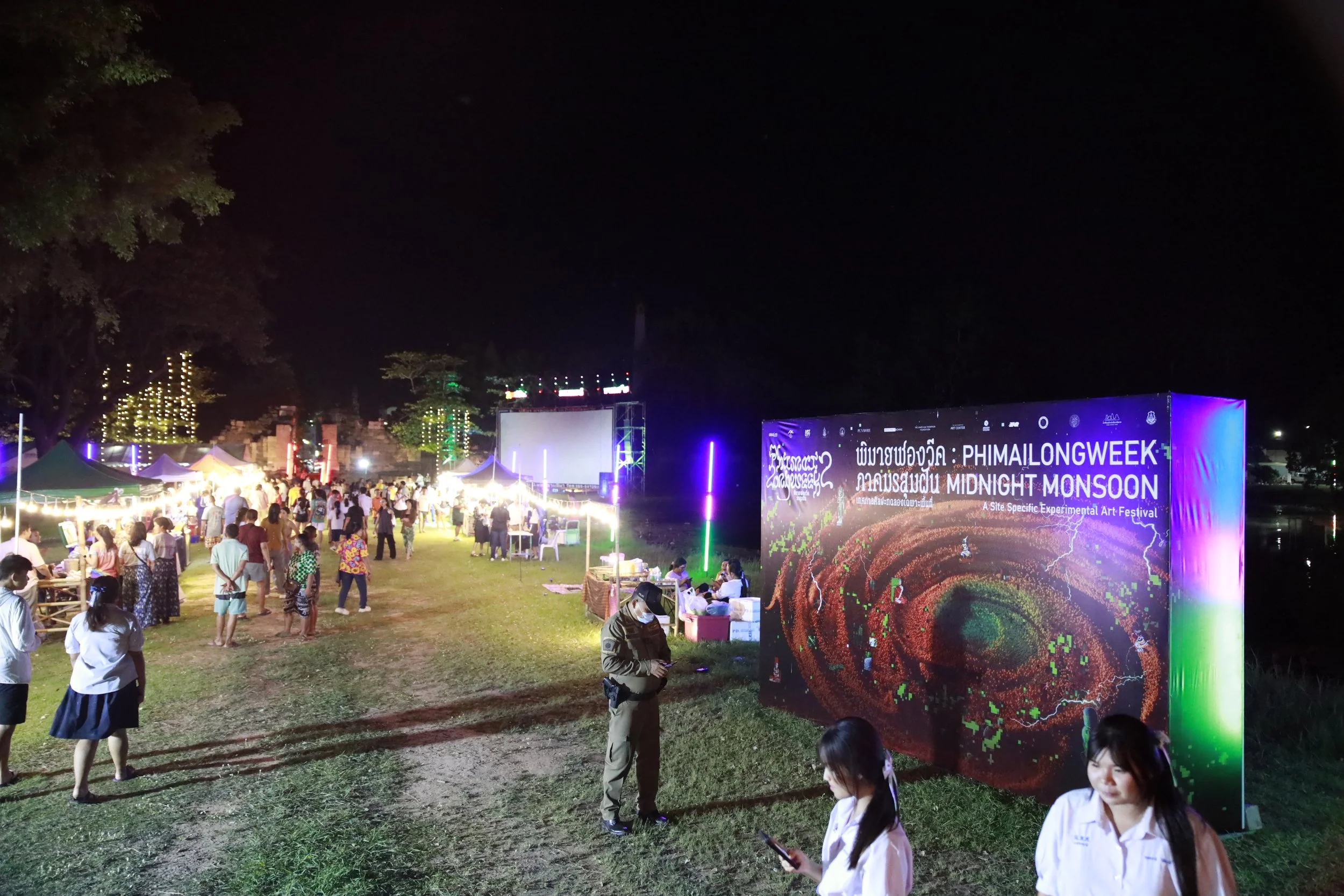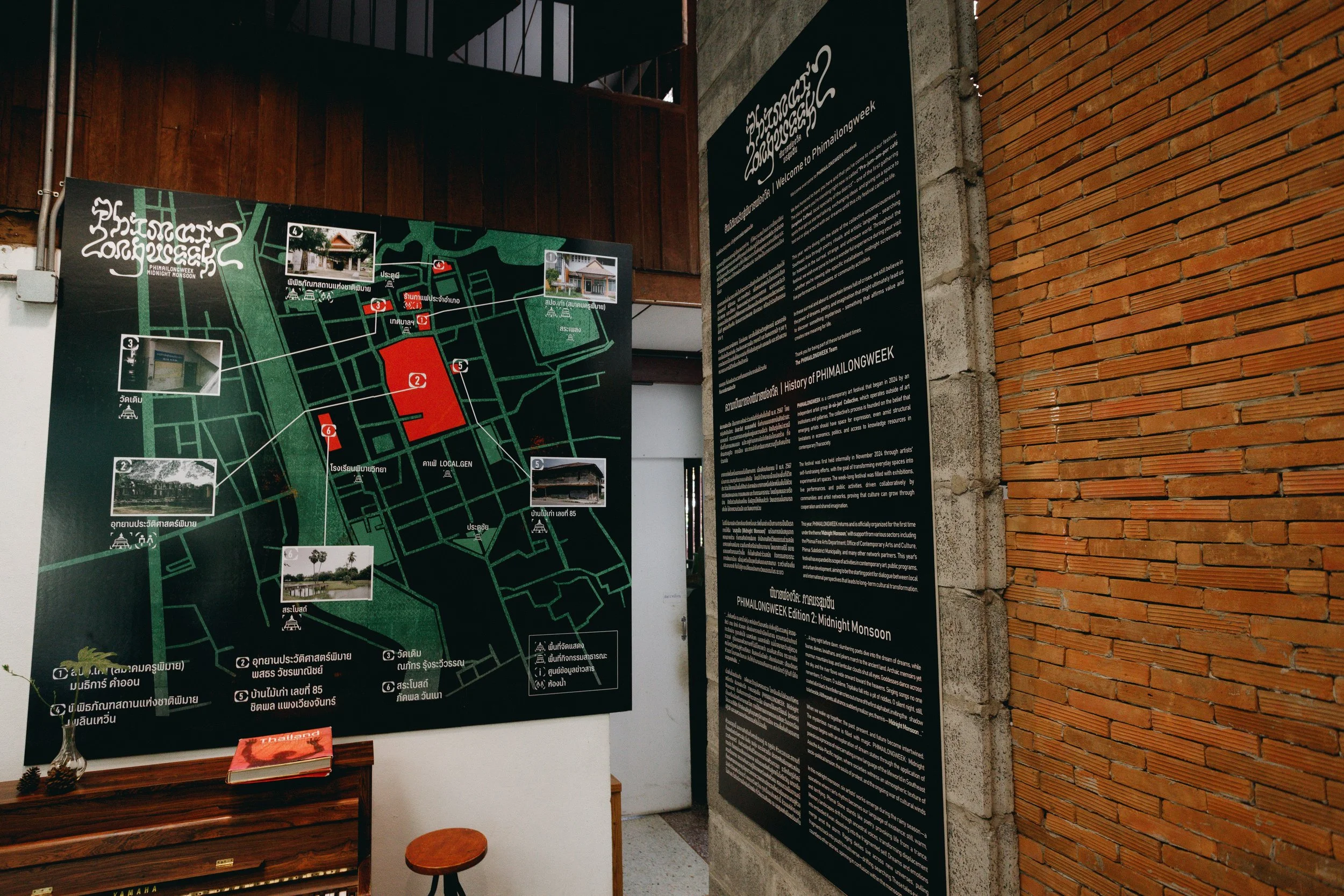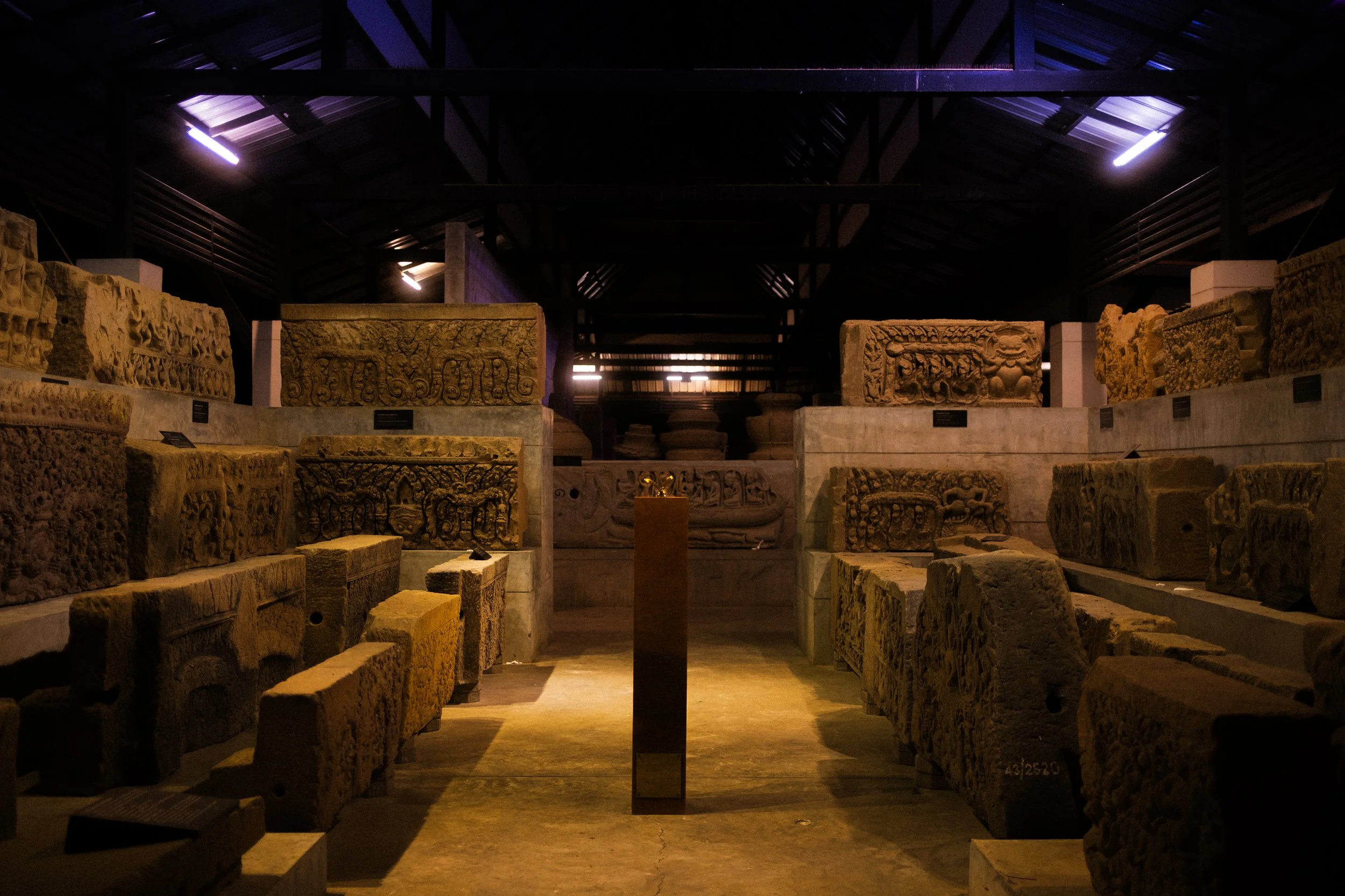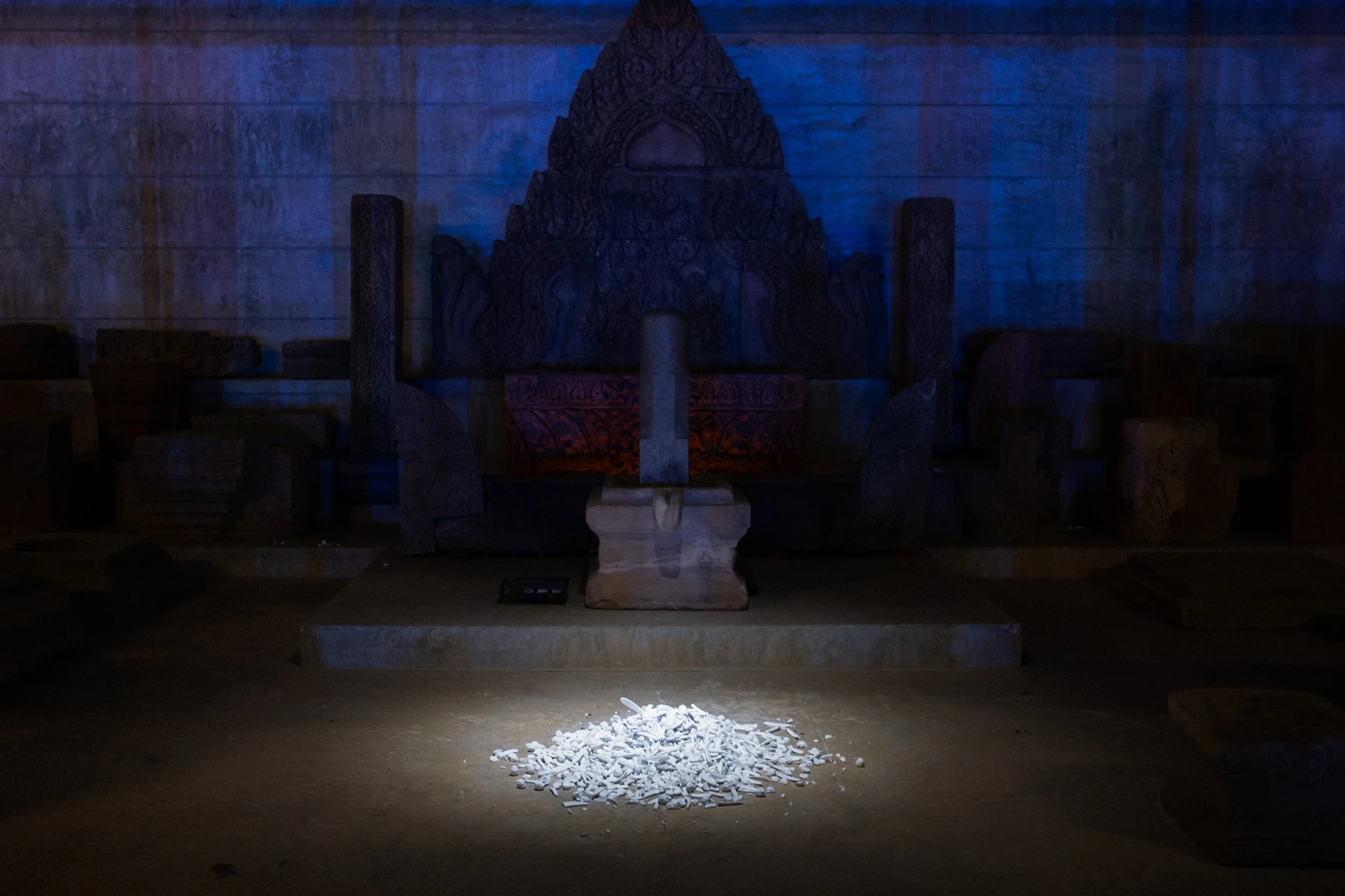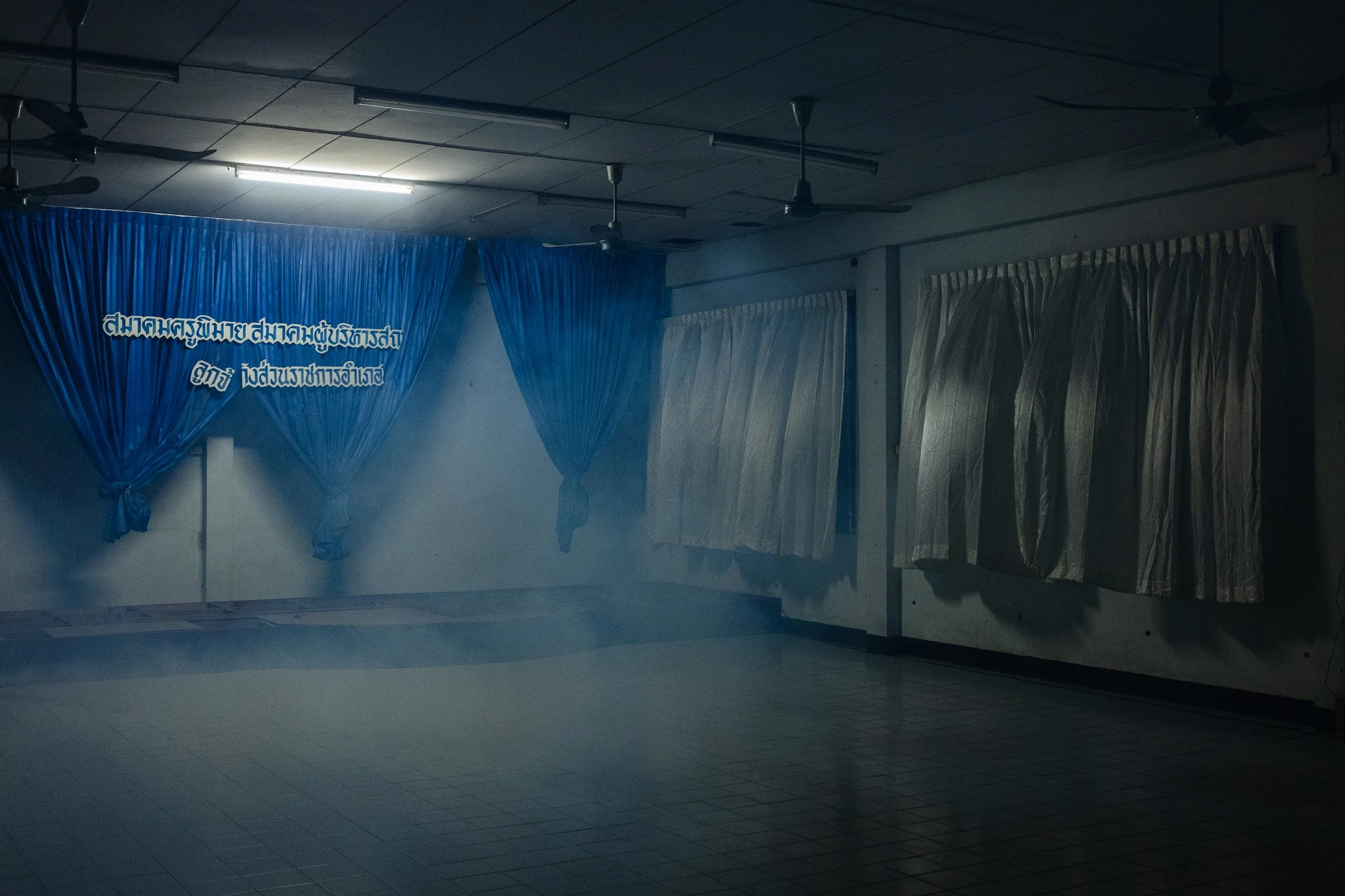Drafts/Droughts from ‘Midnight Monsoon’
PHIMAILONGWEEK Edition 2 on shifting sands
This is a winning entry from the sixth Fresh Take 2025 writing contest. For the full list of winners and prizes, click here.
Opening week of PHIMAILONGWEEK 2025. Image courtesy of PHIMAILONGWEEK 2025.
This is an ode to PHIMAILONGWEEK 2025, a site specific contemporary arts festival held from 1 to 15 August 2025, in Phimai district, Nakorn Ratchasima province, Thailand.
Take it with a grain of sand
It takes roughly a thousand years for a piece of stone to turn into sand, and an equally long duration of weathering and traveling, through river basins and wind, for sand to sediment into stone. At a certain point, those small grains gathered into big rocks, which were taken across landscapes to monumentalise gods and kings.
The secret of how those gigantic bricks were transported by land to build Phimai is lost to time. One deducible fact is they were dragged by the labour of slaves and prisoners of wars. Today, the archaeological site is known as the largest Khmer prasat outside Cambodia. Nobody knows how long it took to construct the whole site, but it took us four hours to drive from Bangkok to Phimai.
Map of PHIMAILONGWEEK 2025. Image courtesy of PHIMAILONGWEEK 2025.
The piercing heat of August scorched our skins as soon as we left the car. Perhaps this was what the àt-sà-jan! collective felt when Thailand Creative Culture Agency (THACCA) poured a dune’s worth of funds into their hands for the second edition of PHIMAILONGWEEK. This was a stark contrast to the festival’s first edition in November 2024, when artists and curators scraped together their own resources. Like the (re)formation of sand into stone, àt-sà-jan! collective was formed in the beginning of 2024 by a group of friends that included Podcharakit To-im, Monthika Kham-on, Possathorn Watcharapanit, Chitpon Paengwiangjan, Napat Roongrawewan, Pakapol Wannao, and Piyathida Inta. They came together out of frustration for how emerging artists are treated in the current Thai arts ecology. Thus, the friends transformed Phimai, one of the member’s hometown, into their curatorial laboratory; showcasing their works while also engaging with the city’s local histories. Many of these works delve into the question of national memory, the weight of capitalism, and what it feels like to be an emerging artist from Thailand.
This second gathering, a two-week monsoon, rose higher on stronger support. Yet, just as the sun gives life and also scorches, so too does funding from vast institutions. Artists need its nourishment, but the weight of restrictions can grind them down like desert winds. And in a political climate where THACCA itself was built on shifting sands, the fragile remains of a recently ousted government, who can say what ground the arts will stand on next?
PLERN VERN, Kwan Oei Kwan Mai, 2025, sound installation and sculptures. Image courtesy of PHIMAILONGWEEK 2025. Photo by Natthaya Thaidecha.
PLERN VERN, Kwan Oei Kwan Mai, 2025, sound installation and sculptures. Image courtesy of PHIMAILONGWEEK 2025. Photo by Natthaya Thaidecha.
Na-Kala, or the face of time
The deity Kala, whose name means “time” in Sanskrit, was born from Shiva’s fury and cursed to stand as a stone guardian at temple gates. Now chained in the National Museum, he remains powerless like sand caught in a glass, forever counting time without end. Perhaps Kala’s power withered when it was lifted from the prasat and poured into the open storage of the museum, like tipping an hourglass, exposing its cycles. The recurring tensions between Thailand and Cambodia spill like the falling sand, faultlines along colonial borders that never healed.
The curators had invited a new sound artist duo, PLERN VERN, to join this season. The duo installed movement censors in the open storage of Phimai National museum around Kala. Upon detecting a change in light and shadows, the duo’s composition would start to play on loop.
An unfamiliar sound of the F16 plane grazed above us, mingling with the lamenting sound of the Pi Or, an ancient Southern Isan oboe made of bamboo. See?! This is what Kala was meant to stop. The forgotten folk tunes intertwined with droning electronic sounds, like a chant to free Kala of his ghostly entrapment. Outside of the festival grounds, however, the ghost of nationalism was awakened on both sides of the borders instead.
Montika Kham-on, The Storm That Took Everything Away, 2025, video loop, light and sound performance. Image courtesy of PHIMAILONGWEEK 2025. Photo by Natthaya Thaidecha.
Building castles in the sand
Along the way, we took the newly built M6 motorway over Khlong Phai prison. Is it a coincidence that the word for prison also contains the word to remember in Thai? Ruen-jum, house of incarceration, could also be read as house of remembrance. Montika Kham-on asked an iteration of the same question: could we dream outside of someone else’s dream? Are we not jailed in someone else’s dream and memory? The artist was direct in pointing to the dream of national grandiose, which came at the expense of silencing dissident voices.
Kham-on’s video, light and sound installation, The Storm That Took Everything (2025) was nestled in the rooms of Phimai Teacher’s Association building. Walking into the 1960s building, one would probably choke from all the dust that covered rows of framed certificates. Those gold-lettered papers announced that the teachers were proud members of the paramilitary Village Scouts founded in the 1970s, a prime example of some Phimai locals being swept up in anti-communist propaganda. Maybe British historian Carolyn Steedman was right when she proposed that dust in libraries and archives were literally causing the archive fever. Here, it was the dust mixed with sand that was hard to shake off. A sandstorm must have visited the building, but the surges of wind seem to have left everything in its original place.
Montika Kham-on, The Storm That Took Everything Away, 2025, video loop, light and sound performance. Image courtesy of PHIMAILONGWEEK 2025. Photo by Natthaya Thaidecha.
In the darkness, the loud bangs and rumbling echoes in Kham-on’s installation sounded like a mixtape of scenes from various protests demanding basic human rights in Thailand. It felt like the desert wind blew sand into my eyes, forcing me to glimpse the fractured edges of Thai society, the parts where the festival artists have been dreaming to heal. When Kham-on flicked on the lights, the sounds and videos abruptly ended. It was as if the sandstorm had already erased it all, like Bangkokians hosing away traces of past protests. The echoes left the space like a barren wasteland, drained of life and hope. Each rumble lingered like a draught, whispering the absence of what has been lost and what still might never heal. Ironically, in this Phimai monsoon season, there was no rain. Did someone also take away the rain?

